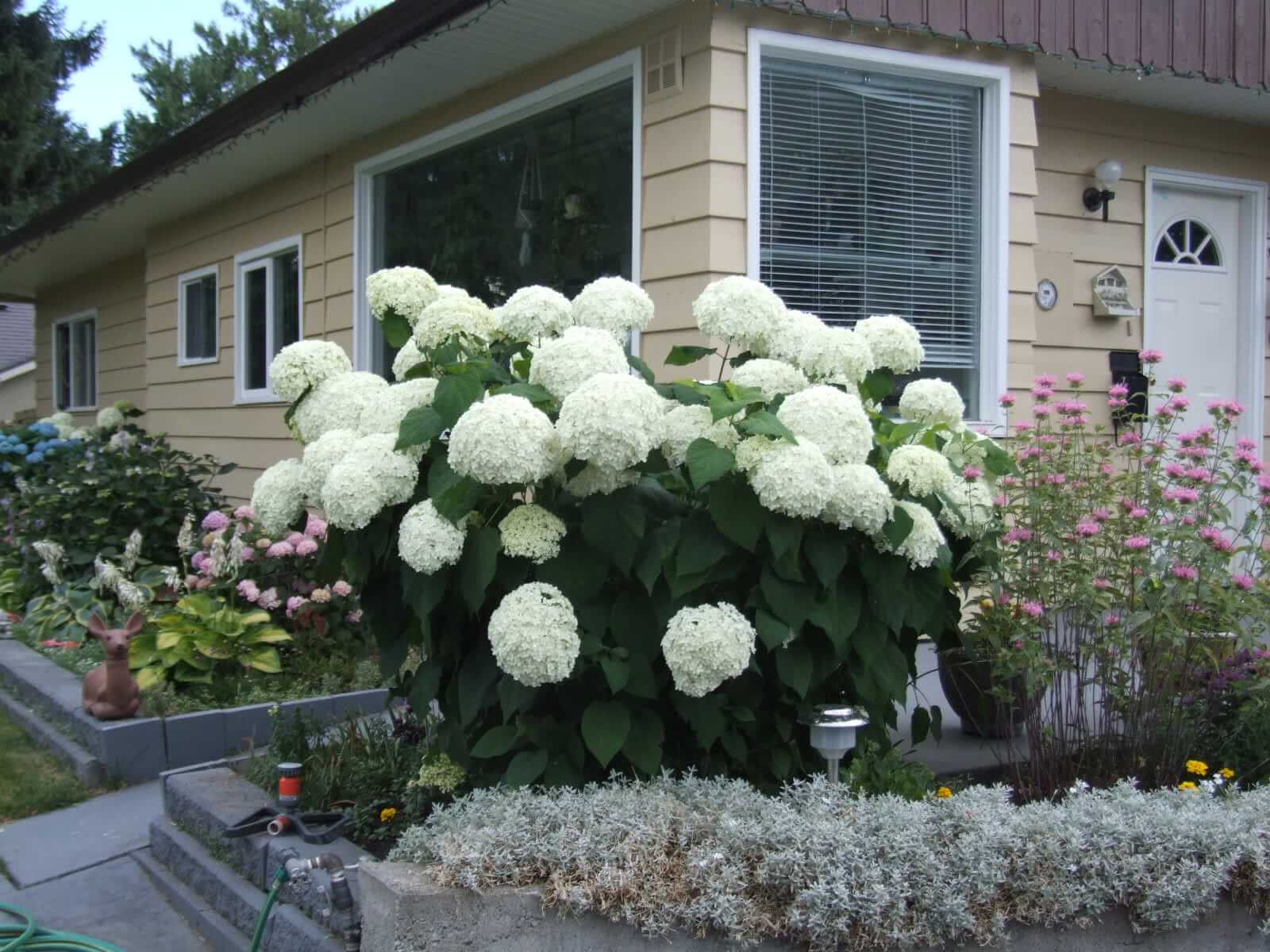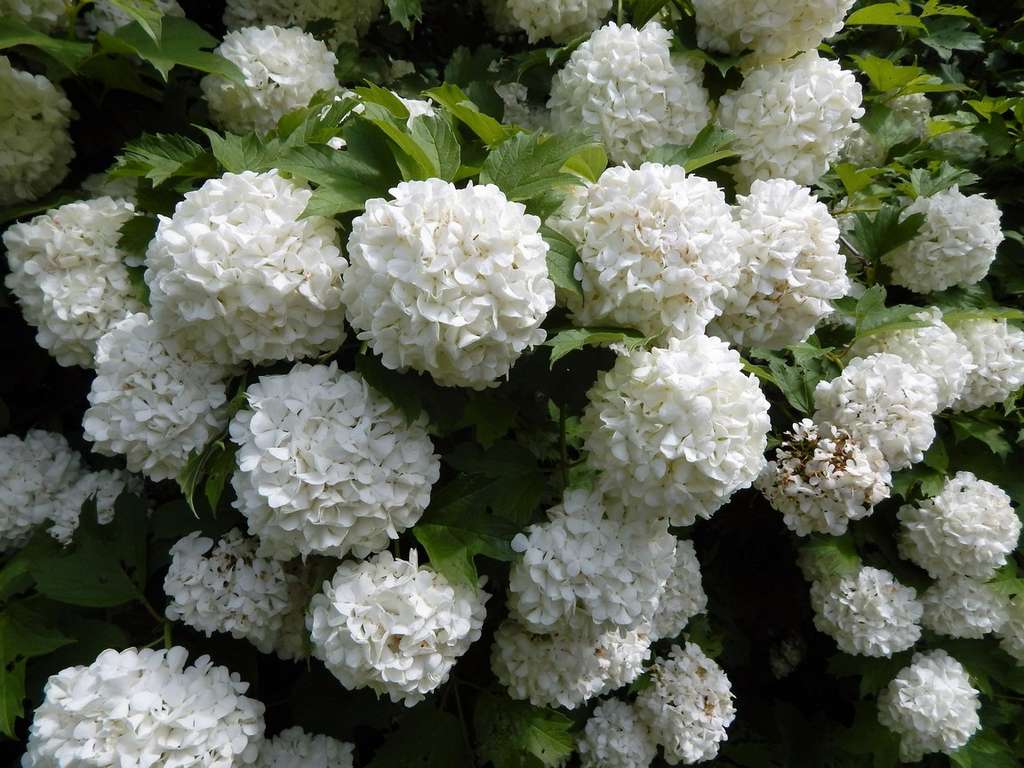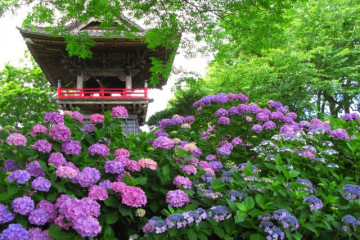Hydrangea in Siberia - planting and care in the open field
Content:
Hydrangea is a thermophilic plant, so it can be difficult to grow in the harsh Siberian climate. Hydrangea in Siberia, planting and caring for it in the open field requires a lot of desire and certain gardening skills. Most often, flower growers prefer to see it as a houseplant, but some manage to decorate their garden plot with this flower. It can be difficult, but the result is worth the effort.
The origin and appearance of the plant
It is believed that the flower got its name thanks to the French doctor and naturalist F. Commerson in the 18th century. It is believed that he saw the plant during his trip to Japan. He was fascinated by the magnificently flowering shrub of extraordinary beauty, the name of which none of the Japanese knew. Then the doctor made a decision and named it hydrangea in honor of his beloved woman.
There is another version of the origin of the name of the flower, according to which it received its name in honor of the beautiful princess Hortense. She was the sister of one of the members of the French expedition around the world at the end of the 18th century. The members of this expedition discovered the plant in India and brought it from the island of Mauritius.
The plant got from Japan to Europe only in 1820. In 1900, breeders began to study it and work on obtaining new varieties. The first varieties were extremely thermophilic and were grown only as domestic ones. Today the genus Hortensia includes about 90 varieties, some of which have such an important property as resistance to various climatic conditions. It is these varieties that are suitable for growing in the harsh Siberian climate.
Garden hydrangea is a perennial wintering shrub of extraordinary beauty, the height of which can reach 2 m. During the flowering period, which on average lasts from May to September, large inflorescences are formed on the bush, reaching 30 cm in diameter. The number of inflorescences on one adult plant can be more than a hundred.
Plant flower descriptions
The hydrangea inflorescence is predominantly spherical. Each consists of two types of flowers: the first are small fertile, located in the center, the second are large sterile (sterile), placed at the edges of the inflorescence. In some species, only fertile flowers are present.
Most varieties have flowers that are exclusively white, but there are hybrids in other colors: cream, blue, red, lilac and pinkish.
The fruit of the flower is a box with 2-5 chambers containing small seeds.
Types and varieties
In the modern world, there are many different varieties and species of this plant. But not all options are suitable for planting, caring for and breeding hydrangeas in Siberia. Most often, tree and paniculate species are planted there.
Tree-like
Treelike hydrangea is found most often in Siberia. Gardeners make such a choice because this species tolerates the harsh climate better, it is easier for it to winter than others, and it also copes well with possible diseases. They are unpretentious to the soil.
The main varieties suitable for growing in Siberia:
- hydrangea Annabelle has large white inflorescences. It begins to bloom in mid-summer (late June - early July) and ends in early autumn. Height is 120-150 cm, width - up to 350 cm. It can easily tolerate temperatures down to −28 ° C, but in Central Siberia and its western regions, it is better to plant a plant in a pot for wintering and put it in the basement;
- Strong Annabelle. This variety is interesting for the original shape of its inflorescences. They resemble a dome or hat. Flowers at the very beginning of the flowering period are mint and snow-white, by the middle of the period they become completely white, and by the end they turn slightly green. The stems are not very tall, up to 1.5 m in height and up to 1.3 m in width. The leaves are kept until the onset of frost, without changing their color. It can winter at -34 ° С;
- Invincibelle Spirit. A variety of woody hydrangea, the most suitable for Siberia, since it can withstand frosts down to -38 ° C. It was launched recently, in 2010 in the United States. Initially, it blooms pink, gradually changing the hue to raspberry. He has a fairly long flowering: from June to September. Branches perfectly. Height up to 1.3 m, width up to 1.5 m.
Paniculata
Hydrangea paniculata in Siberia is also quite common. It is a medium-sized tree with oval-shaped pubescent leaves. The flowers are small, collected in large clusters with a delicate aroma.
The best panicle hydrangeas suitable for growing in Siberia are:
- Hydrangea Silver Dollar. A tall plant (can reach 3 m in height, but no more than 2 m grows in Siberia) with large snow-white flowers, collected in beautiful cone-shaped inflorescences, which acquire a pale pink hue by the end of flowering. An unpretentious variety that can withstand temperature drops up to −25 ° С;
- Medical Fire. The variety is optimal for Siberia, since it is quite frost-resistant. Its peculiarity is in unusually beautiful colors. The change in shades is as follows: white - pink - fiery red. Height is about 2 m, width - up to 1.5 m;
- Limelight. It grows up to 1.8 m in length and up to 1.5 m in width. It is a fairly compact variety of hydrangea. Lemon-colored inflorescences that turn soft lilac by the end of flowering. In Central Siberia, this variety must be covered, since the minimum temperature at which it does not freeze is −30 ° C.
Large-leaved
Another type of hydrangea that is grown in Siberia is large-leaved. Gardeners pay attention to it due to unpretentiousness in the choice of soil and a later flowering period, which can last from late August to early November. Inflorescences can have a variety of colors and resemble a wide wheel in shape. The downside of all varieties is that in winter it is better to transfer it from the garden to the basement, since they remain viable only at temperatures down to -25 ° C.
When to plant hydrangea outdoors in spring in Siberia
The optimal time for buying and transplanting hydrangeas is spring.However, for each Russian region, the term varies slightly depending on climatic conditions. Planting hydrangeas in open ground in Siberia is carried out in late April - early May.
What is needed for landing
The most important thing is to determine exactly when to plant hydrangea outdoors in Siberia. This should be the period when the frost has already passed, since the young bushes are quite sensitive to them. You can also check the lunar calendar.
For planting, you must choose the right place and prepare the soil. It should consist of peat, humus and sand (2: 1: 1). It is worth adding needles to give the necessary acidity. In addition, you need to choose the depth of the holes and the distance between them. For small seedlings, the depth should be 50 × 50 × 50 cm, for larger ones - 80 × 80 × 80 cm.The distance between the bushes is at least 60 cm.
Choosing the best place
In Siberia, it is especially important to determine the place of planting a hydrangea bush. First of all, the plant must be protected from the wind. Therefore, it is best to plant it along a fence or a living, growing continuous, hedge of taller shrubs. As for sunlight, the plant does not tolerate direct rays. Optimally, it will grow in partial shade. Soil is also important. It should not be alkaline; slightly or moderately acidic is more suitable. Subject to all these conditions, hydrangea will delight its owner with good growth and lush flowering.
How to plant
Step-by-step planting process:
- A few hours before planting, the hole must be thoroughly shed.
- For a seedling with an open root system, make a small mound at the bottom of the hole, consisting of fertile soil and peat.
- Place the seedling in the center of the hole.
- Spread the roots so that they do not bend.
- Fill the hole evenly with a mixture of a fertile soil layer and sour peat (without deepening the root collar, more than 4 cm).
- Lightly compact the ground.
- Water the plant thoroughly.
- If the soil settles after that, fill it up to the original level.
- At 5-7 cm, mulch the planting site with needles, sour peat or rotted sawdust.
Reproduction
In Siberia, as in other Russian regions, hydrangea propagation occurs in two ways - by cuttings and seed. The first is best suited, since growth and development will occur at a better rate, and this is very important for a short and cool Siberian summer.
Propagation by cuttings
Cuttings for a new plant are cut from mature, well-growing bushes. They are cut from the lignified shoots of the previous season. If the procedure is expected in the summer, you can take a green scion. Next comes rooting in the open field. The correct option would be to plant the cutting in a greenhouse before rooting. If there is none, then it can be planted in open ground and covered with a film, which periodically needs to be opened for several minutes to provide air access to the young plant. The first flowers should appear on the plant in two years.
Growing from seeds
The seed method of growing hydrangeas is much less popular and effective than cuttings. However, it also exists, and in Siberia you can use it. When choosing seeds, you need to pay attention to their integrity and the absence of stains. If these are not self-collected seeds, then you should definitely consult with the seller. They should not be frostbitten, painful, or lethargic.
The easiest way is to plant seeds in boxes. This will require a substrate consisting of peat, sand, turf, humus and leafy soil.The resulting mixture is poured into a 15 cm box so that about 3-4 cm remains from the top edge. If the seeds were not previously germinated, then they are simply scattered over the soil. For the germinated, pits are made 1 cm deep, where the seeds are planted. Next, the earth is watered from a watering can or sprayed from a spray bottle and covered with film or glass. The soil is moistened as it dries, and a box is opened for ventilation. The cover is removed when the first shoots appear.
In a similar way, seeds are planted in open ground. This should be done in mid-May, when the frosts are over completely, and the soil warms up.
Care in the Siberian climate
The thermophilic hydrangea growing in Siberia must be especially carefully monitored. The main points are watering, regular feeding, proper care and preparation for the harsh Russian winter.
Watering mode
Hydrangea is a plant that loves moisture, but does not tolerate excess of it. Watering is carried out as the topsoil dries up with soft, settled water. To prevent moisture from evaporating too quickly, you can put a layer of mulch under the bush.
Top dressing
During the season, feeding is carried out four times:
- fertilization in the spring with a solution of manure or nitroammofoska;
- feeding with nitroammophos in June;
- when the first buds appear, fertilizing with phosphorus and potassium is required;
- before wintering, it is required to put 5-8 kg of rotted compost under each bush.
Features of care during the flowering period
During the flowering period, it is important to prevent the soil from drying out, fertilize the bushes in time and make sure that the plant does not suffer from parasites and diseases. When they appear, be sure to remove the damaged parts and treat the entire bush with insecticides.
Features of care during the rest period
During the rest period, in the spring, it is imperative to prune. Hydrangea tolerates cardinal pruning, which is done to give the bush the desired shape. But you need to refresh the plant annually. After the transferred winter, it is imperative to remove dried branches and flowers. For old plants, pruning is best done immediately to small stumps, so that the bush is completely renewed for the appearance of young shoots and more lush flowering.
Preparing for the Siberian winter
For the winter period in Siberia, hydrangea must be prepared with special care. Despite the fact that the plants grown there are quite resistant to cold weather, freezing should be avoided. Otherwise, there will be no flowers on the bushes in the summer, many branches will dry out, it can reach the point that the hydrangea will die completely. To prepare for winter you need:
- huddle the roots by about 30 cm, adding a layer of peat or compost under them;
- when bending the stems, you should not put them on the ground, but put something under them. It can be spruce paws, cardboard, boards. The branches must be fixed to avoid straightening them;
- moisture must not be allowed under the shelter;
- it is important to remember that the older the hydrangea is, the more frost-resistant it is.
Hydrangea is a plant that deserves attention. It is very common in the central and southern regions of Russia, but Siberians should not deny themselves the pleasure of enjoying its delightful appearance. If you follow all the rules for caring for a hydrangea, then it will delight with its lush flowering every summer and will be able to endure even severe frosts.
























